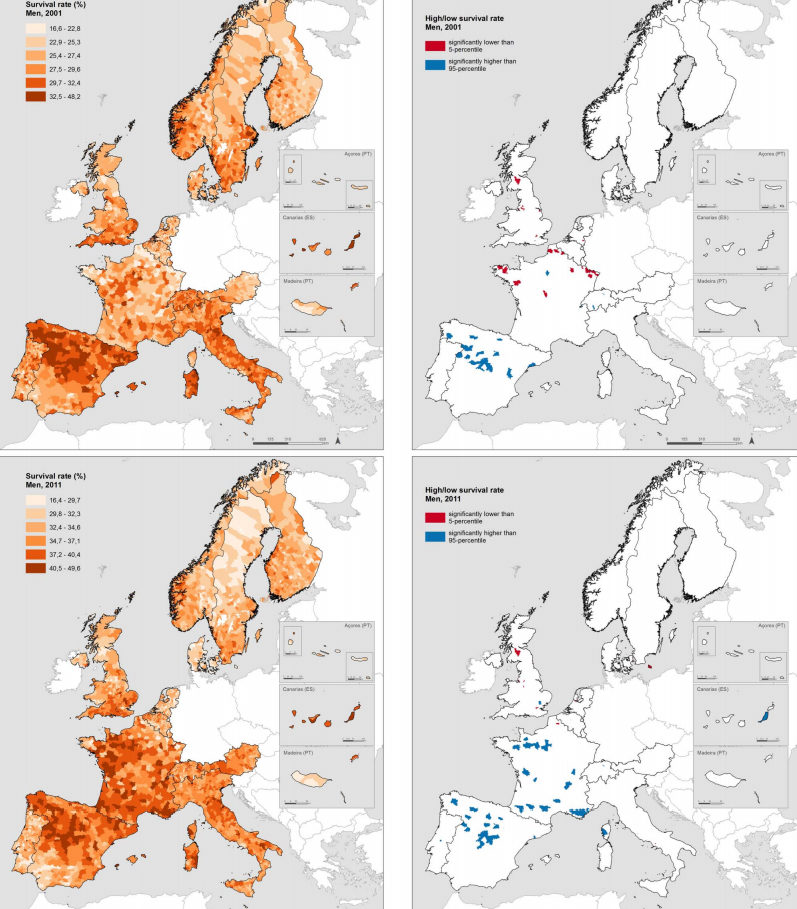RECENT PUBLICATIONS: Where do people live longer and shorter lives? An ecological study of old-age survival across 4404 small areas from 18 European countries
INEB researchers recently published an article in the Journal of Epidemiology & Community Health, available since February 15th 2016. The article is entitled "Where do people live longer and shorter lives? An ecological study of old-age survival across 4404 small areas from 18 European countries" and is authored by Ana Isabel Ribeiro, Elias Teixeira Krainski, Marilia Sá Carvalhoand Maria de Fátima de Pina.

Spatial distribution of the 10-year survival rates across small areas of Europe in 2001 and 2011 (men). (A) Survival rates; (B) areas of high (above 95th centile) and low (below 5th centile) survival.
Further increases in life expectancy in high-income countries depend to a large extent on advances in old-age survival. We aimed to characterise the spatial distribution of old-age survival across small areas of Europe, and to identify areas with significantly high or low survivorship.
This study incorporated 4404 small areas from 18 European countries. We used a 10-year survival rate to express the proportion of population aged 75– 84 years who reached 85–94 years of age (beyond average life expectancy). This metric was calculated for each gender using decennial census data (1991, 2001 and 2011) at small geographical areas. To address problems associated with small areas, rates were smoothed using a Bayesian spatial model. Excursion sets were defined to identify areas with significantly high (>95th centile) and low survival.
In 2011, on average, 47.1% (range: 22.5– 71.5) of the female population aged 75–84 years had reached 85–94 years of age, compared to 34.2% (16.4– 49.6) of the males. These figures, however, hide important and time-persistent spatial inequalities. Higher survival rates were concentrated in northern Spain, Andorra and northeastern Italy, and in the south and west of France. Lower survival was found in parts of the UK, Scandinavia and the Netherlands, and in some areas of southern Europe. Within these regions, we detected areas with significantly high and low old-age survival.
Clear and persistent spatial inequalities in old-age survival exist, suggesting that European social unity is still to be accomplished. These inequalities could arise from a myriad of population health determinants (eg, poverty, unhealthy lifestyles), which merit further study.


